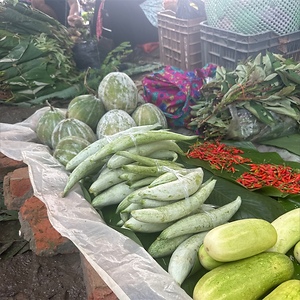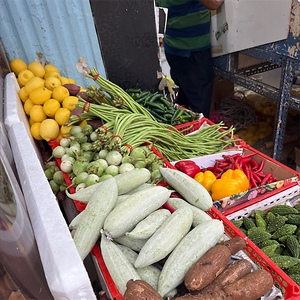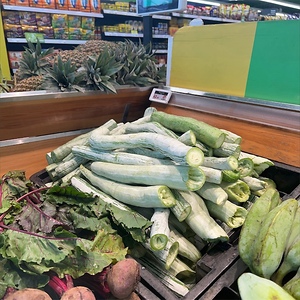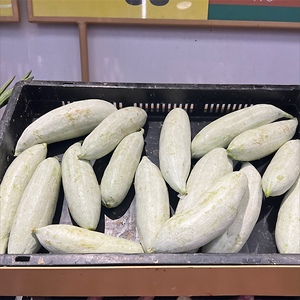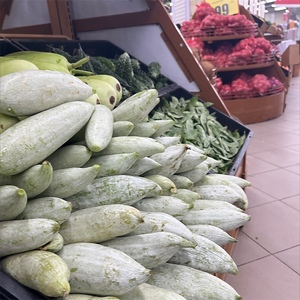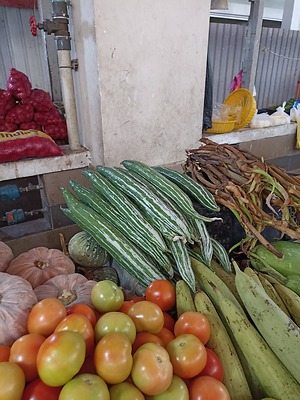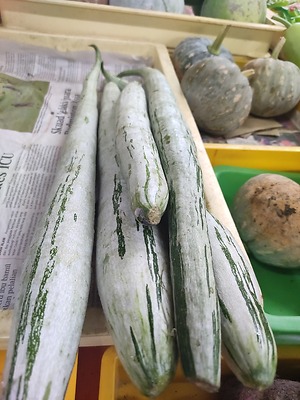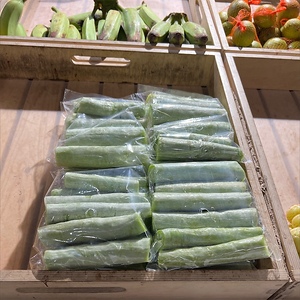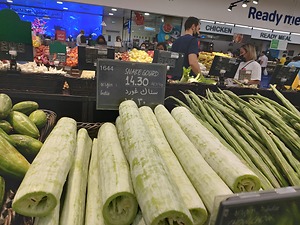

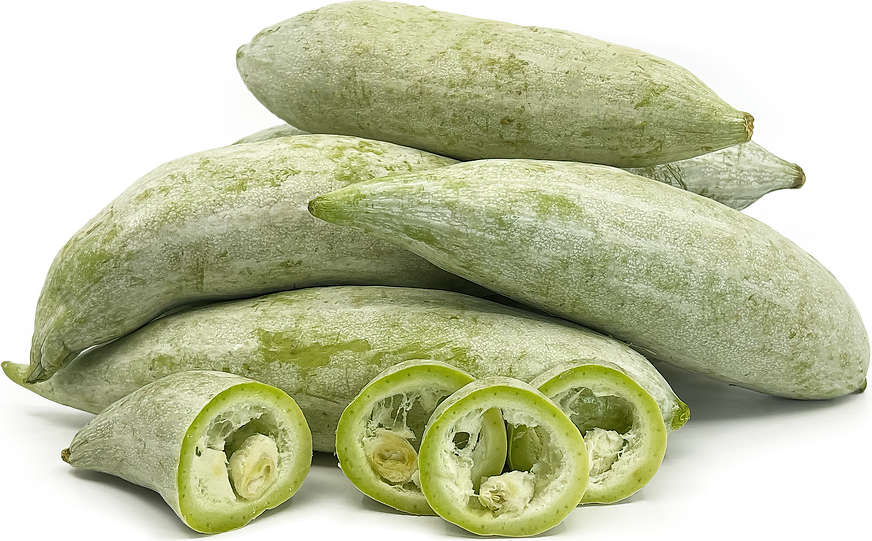
Snake Gourd
Estimated Inventory, lb : 0
Description/Taste
Snake gourds range from small to very large in size and are elongated, slender, curved, or straight. There are two different categories of Snake gourds. One type is extremely long with hard skin and is grown for ornamental purposes, and the other type ranges in size and is grown for eating and medicinal purposes. Snake gourds that are used for consumption have waxy green skin and are often speckled or striped with a lighter shade of green. The fruit is typically consumed when young, with longer varieties averaging 40-45 centimeters in length and smaller varieties 15-20 centimeters in length. The gourd may grow straight or in twisted curls and spirals. When Snake gourds are young, the seeds are fairly non-existent, the pulp around the seed mass is firm, and the flavor is mild and similar to a cucumber. As it matures, the rind becomes hard, turns red, and the flavor becomes bitter and gelatinous with many seeds.
Seasons/Availability
Snake gourds are available in the late summer through fall.
Current Facts
Snake gourds, botanically classified as Trichosanthes cucumerina, grow on annual, tropical vines and are some of the longest gourds in the world, belonging to the Cucurbitaceae family. Also known as the Serpent gourd, Snake squash, Club gourd, Chichinda, Padwal, and Pudalangai in the southern states of India, Snake gourds can grow 1-2 meters in length and when dried, can be made into a didgeridoo, an Australian aboriginal wind instrument. There are several varieties of Snake gourd that are cultivated and grown in India and other areas of the sub-tropics, and they are favored by chefs for their mild flavor and large size.
Nutritional Value
Snake gourds contain iron, magnesium, potassium, manganese, vitamins A, B, and C, fiber, calcium, and phosphorus.
Applications
Snake gourds are best suited for cooked applications such as stir-frying, baking, stuffing, and boiling. They can be prepared and used like zucchini, sautéed and served as a side dish or added to dishes with other sautéed vegetables. They can also be added to sabzi, chopped into curries, stuffed and grilled, made into a chutney, fried, blended into soups, sliced into stir-fries, or pickled for extended use. When the gourd is mature, the seed mass within is scraped out and used like tomato paste in various Indian dishes. Snake gourds pair well with turmeric, cumin, coriander, mustard, red chiles, curry leaves, coconut, onion, garlic, potatoes, tomatoes, pumpkin, lentils, tofu, poultry, pork, and beef. They will keep for 2-3 weeks when stored in an airtight container in the refrigerator.
Ethnic/Cultural Info
In Ayurveda, the ancient medical system of India, the Snake gourd serves multiple purposes and acts as a cooling ingredient. Ingesting the fruit, leaves, and flowers of the Snake gourd plant is believed to help aid in digestive disorders, diabetes, and skin diseases. Snake gourds are also believed to help in the treatment of a variety of ailments such as fever, low immunity, general debility, frequent urination, hair loss, and obesity.
Geography/History
Snake gourds are native to Asia and were originally domesticated in India. The seeds were then transported from China to Europe via traders in the early 18th century and were believed to have been planted at Monticello by Thomas Jefferson in 1820. Today there are many different varieties of Snake gourds growing across the world, and they can be found at local markets and specialty grocers in Asia, Southeast Asia, Australia, the Western Pacific, Africa, Madagascar, and in Florida in the United States.
Recipe Ideas
Recipes that include Snake Gourd. One



